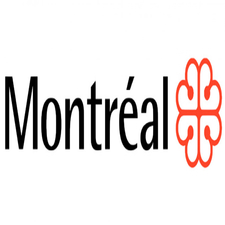Landscape
Type of resources
Available actions
Topics
Keywords
Contact for the resource
Provided by
Formats
Representation types
Update frequencies
status
-
This LiDAR DEM, originated from the Government of Manitoba (2019-05), was hydro-conditioned with a recent culvert inventory including GIS data from the Province of Manitoba for provincial highways as well as hard copy maps from the Rural Municipality of Lorne. It also included GPS and desktop surveys as part of a collaborative effort between Agriculture and Agri-Food Canada, Swan Lake First Nation, and Pembina Valley Watershed District. The hydro-conditioned DEM was used by the International Institute for Sustainable Development (IISD) as input for hydrological modelling of catchments near Swan Lake flowing into the Pembina River (Pembina River Watershed, MB) to spatially target water-related agricultural beneficial management practices (e.g, flood management infrastructure, water retention structures, nutrient and sediment load reduction practices). The DEM spatial extent represents the area of interest referred to as the “Swan Lake Study Area”, as part of the Eastern Prairies Living Lab, AAFC (2019-2023).
-

The Fleuve-Montagne Promenade is a 3.8 km pedestrian route that allows Montrealers and visitors to discover emblematic places in Montreal. The walk traces the pedestrian link between the two natural icons of Montreal, the Saint Lawrence River to the south and Mount Royal to the north, to introduce walkers to iconic places located in the heart of Montreal. The data set shows the linear path as well as the point markers as presented in the [project mapping] (https://montreal.ca/articles/la-promenade-fleuve-montagne-24009).**This third party metadata element was translated using an automated translation tool (Amazon Translate).**
-

The land use and development plan puts forward a frame of reference aimed at better knowing, protecting and promoting heritage. The data available in this set mainly comes from the mapping in section 2.3 of the Land Use and Development Plan of the Agglomération de Montréal, i.e. the __built or archaeological heritage__, the __emblematic and identity landscapes__, as well as the __views of interest__. This urban planning and development plan for the agglomeration of Montreal outlines the main parameters that will guide the Montreal agglomeration council in decisions relating to land use planning in the coming years. From a perspective of sustainable development, this document guides decisions that shape the territory in order to promote compact and greener neighborhoods, increase public and active transportation, support the economic dynamism of the agglomeration and highlight areas of interest. Consult the [interactive map] (https://montreal.ca/services/cartes-interactives-amenagement-du-territoire) of the Planning and Development Plan to visualize the thematic data.**This third party metadata element was translated using an automated translation tool (Amazon Translate).**
-
The land features of the CanVec series contains landscape features of Canada such as islands, shoreline delineation, wooded areas, saturated soil features, landform features (esker, sand, etc.). The CanVec multiscale series is available as prepackaged downloadable files and by user-defined extent via a Geospatial data extraction tool. Related Products: [Topographic Data of Canada - CanVec Series](https://open.canada.ca/data/en/dataset/8ba2aa2a-7bb9-4448-b4d7-f164409fe056)
-
The elevation features of the CanVec series include the elevation contours and elevation points. These entities are used to describe the relief of the Canadian Landmass. The CanVec multiscale series is available as prepackaged downloadable files and by user-defined extent via a Geospatial data extraction tool. Related Products: [Topographic Data of Canada - CanVec Series](https://open.canada.ca/data/en/dataset/8ba2aa2a-7bb9-4448-b4d7-f164409fe056)
 Arctic SDI catalogue
Arctic SDI catalogue